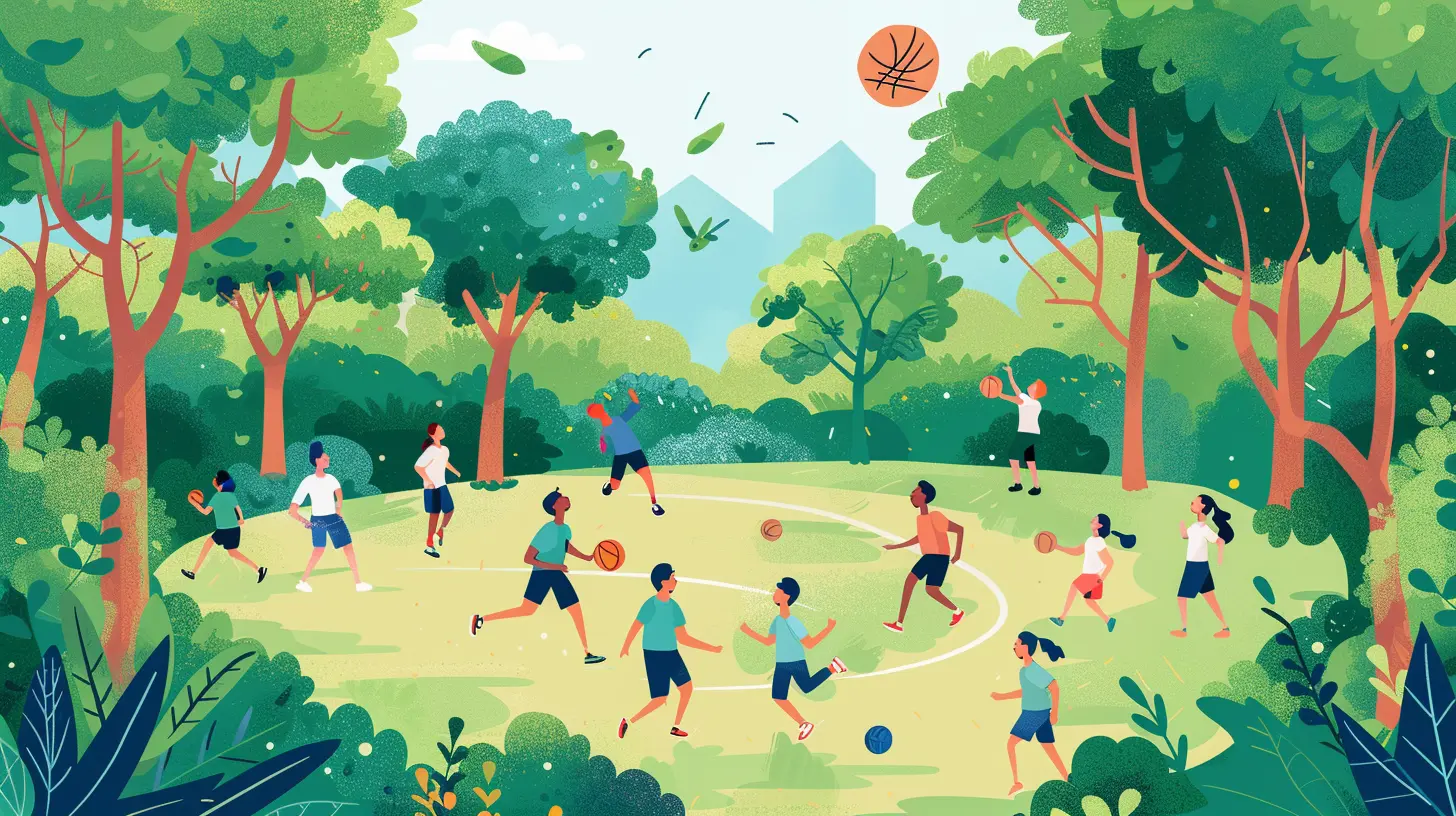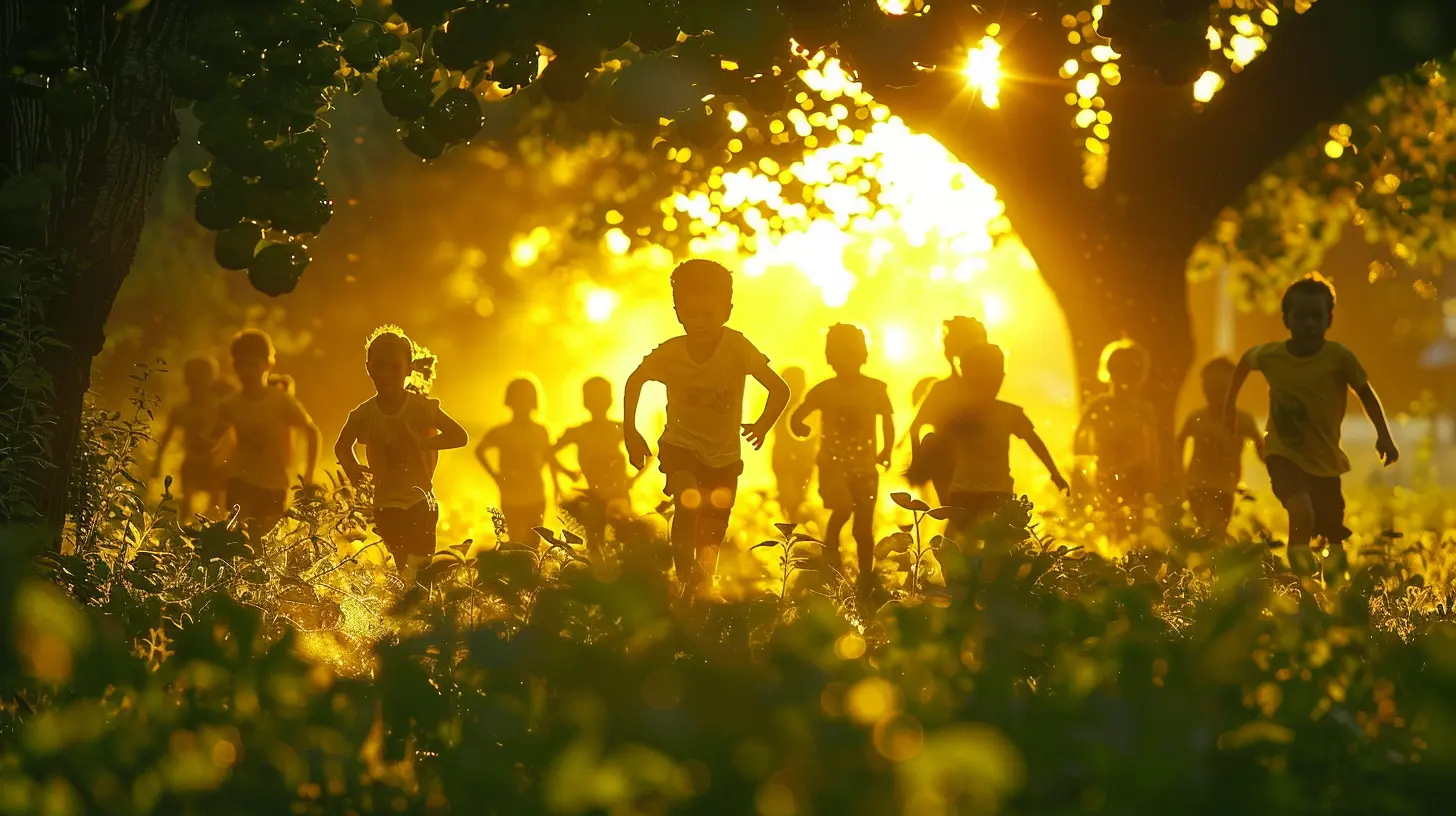Outdoor Physical Education Activities That Promote Environmental Awareness
11 June 2025
In the gentle hush of early morning, as dew clings to the grass and sunlight sketches golden outlines across treetops, lies an untapped classroom — the great outdoors. But this isn’t just any classroom. It’s where students learn not just how to move, run, jump, and breathe, but also how to feel, respect, and connect.
If you’ve ever watched kids chase butterflies in a field or balance on a fallen tree trunk like it’s a tightrope, you’ve seen what real, organic learning looks like. Now imagine combining that playful spirit with a bigger purpose — nurturing a love for our Earth. That’s where outdoor physical education (PE) activities meet environmental awareness. It’s a beautiful fusion — like dancing with nature while learning to care for it.
So pull on your sneakers, grab your backpack (maybe even a reusable water bottle), and let’s set out on a journey to uncover how outdoor PE can turn students into stewards of the earth.
Why Outdoor PE + Environmental Awareness Is a Power Duo
Here’s the thing — kids today are spending way too much time indoors. Screens eat up their attention, artificial light dries up their energy, and slowly, their bond with the natural world fades.But think about this: What if PE classes could reverse that trend?
Outdoor physical education activities can do so much more than improve cardio or teach teamwork. They can:
- Spark curiosity about the environment
- Foster eco-conscious behavior
- Encourage stewardship of local ecosystems
- Teach sustainability through real-life experiences
It’s like getting two for the price of one — fitness and eco-awareness, packaged in the most refreshing way possible.
1. Nature Hikes with a Purpose
Alright, let’s start with an old classic — the nature hike. But not just any hike — a mindful, mission-driven exploration.Instead of just walking, guide students to observe. Ask them to listen to birds, identify trees, or even spot signs of pollution. Combine this with fitness challenges — like interval jogging between checkpoints or doing squats when spotting specific plants.
You’re not just moving — you’re learning to see.
Bonus Tip:
Make it an “Eco BINGO” game. Hand out cards with things like “a plastic bottle,” “a red-leaf tree,” or “a squirrel.” Winning while hiking? Now that’s genius.
2. Plogging: Fitness Meets Eco-Warrior Mode
Have you heard of plogging? It’s a Swedish-born eco-trend that mixes jogging with picking up garbage. Sounds weird? Maybe. But it’s a hit with kids and teens.Students go on a jog, but along the way, they pick up litter. It becomes a race not just for speed, but for who can collect the most trash. Think of it as cardio with a conscience.
This boosts:
- Cardiovascular health
- Teamwork
- Awareness of local environmental issues
Plus, it’s visual. Students can see the impact they’ve made with the bags of trash they collect. Instant gratification.
3. Eco-Games: Turning Classics Green
Remember capture the flag? Or relay races? What if we gave them a green twist?Examples:
- Use recycled materials for game equipment.- Replace traditional flags with eco-themed symbols.
- Create relay tasks like “recycle this” or “sort compost.”
Suddenly, you’re teaching sustainability through play. Sneaky? A little. Effective? Totally.
These games make learning lighthearted and memorable. And let’s face it — fun is the best teacher.
4. Tree Yoga & Mindfulness Circles
Not every activity has to be high-octane. In fact, sometimes slowing down teaches more than speeding up.Try doing yoga sessions under a tree canopy. The natural sounds and filtered light create the perfect space for stillness. Add in mindfulness prompts like:
- “What did you hear today that surprised you?”
- “How did the wind feel?”
- “What are you grateful for in nature?”
This nurtures a deep emotional connection with nature. And that’s exactly what sparks long-term respect and awareness.
5. Scavenger Hunts with an Eco Lens
Scavenger hunts are gold. They’re engaging, competitive, and adaptable. Turn them into a tool for environmental education.Create challenges such as:
- Spot 3 native plants
- Find signs of erosion or water flow
- Identify an invasive species
- Pick up 5 pieces of trash
Layer in team challenges that require cooperation and creativity. The possibilities are endless — and the learning is multi-dimensional.
6. Adopt a Spot: Stewardship in Action
What if every class “adopted” a local patch of nature — a park, a garden, a stretch of beach, even a schoolyard corner?Outdoor PE sessions could include:
- Clean-up sessions
- Habitat restoration
- Tree planting
- Creating bird feeders
Let them watch the area transform over weeks and months. Suddenly, students feel responsible. Proud, even.
This builds not just knowledge, but ownership — a powerful tool for change.
7. Outdoor Team Challenges: Leave No Trace Style
Here’s a cool twist — design obstacle courses or team-building events that follow “Leave No Trace” principles.Have students:
- Build natural shelters (without damaging plants)
- Navigate with compasses (no tech!)
- Solve sustainability puzzles
You’re building life skills here — critical thinking, leadership, and environmental ethics. All without stepping into a classroom.
8. Bike & Learn Trails
Biking is freedom on wheels. But when paired with eco-learning stops? Boom — it becomes a full-body, full-brain experience.Set up stations along a trail where students must:
- Answer questions about local wildlife
- Learn about carbon footprints
- Spot renewable energy sources (like solar panels)
It’s basically a mobile science class meets Tour de France.
9. Environmental Dance & Performance
Want to get creative? Choreograph a dance or movement sequence inspired by environmental themes.Let students embody:
- The ebb and flow of ocean tides
- The chaos of pollution
- The resilience of forest growth
You can even hold a performance day in an outdoor amphitheater or school garden. Movement becomes a message. It’s art, activism, and education rolled into one.
10. Seasonal Activity Rotation
Nature isn't static — it changes, evolves, surprises. Why should your PE program stay the same?Design your curriculum around the seasons:
- Spring: Tree-planting marathons, flower ID hikes
- Summer: Stream wading, sun-powered games
- Fall: Leaf maze races, composting activities
- Winter: Snowshoeing, animal tracking
This allows students to tune into nature’s rhythms, becoming more aware of their impact across seasons.
Teaching Through Action, Not Just Words
Here’s the truth: kids don’t latch onto lectures as easily as they remember experiences. You can talk all day about the greenhouse effect, but when they feel the sun on their backs during a clean-up walk, it sticks.They live the lesson.
Outdoor physical education activities give you that window — a chance to let them move, play, sweat, and grow, all while falling a little in love with the planet.
Making It Happen: Tips for Educators
Feeling inspired but unsure how to start? Don’t worry — here are some easy tips.1. Start Small
You don’t have to overhaul your entire PE program. Add an eco-themed element to just one session a week.2. Collaborate
Team up with science teachers, local environmental groups, or park rangers. Guest experts make it real.3. Make It Student-Led
Let students design their own outdoor challenges or eco-games. Give them ownership, and watch engagement soar.4. Keep Safety First
Always check for hazards. Carry first aid kits, do area sweeps, and establish emergency protocols.5. Reflect Often
End each session with a short group reflection. Let students talk about what surprised them, what they loved, and what they’d change.The Bigger Picture
At the heart of it all, outdoor PE activities that promote environmental awareness help raise a generation that moves with purpose — not just toward fitness, but toward a better world.When kids stretch under open skies, run along rivers, or pick up trash while laughing with friends, they’re not just building muscles. They’re building empathy, responsibility, and connection.
So let’s lace up those sneakers, step outside, and teach our students something no indoor lesson can offer:
That the world is not just a playground — it’s a precious home worth protecting, step by joyful step.
all images in this post were generated using AI tools
Category:
Physical EducationAuthor:

Olivia Lewis
Discussion
rate this article
3 comments
Starling Pratt
Excited to explore how outdoor activities can foster environmental consciousness!
June 17, 2025 at 4:45 AM

Olivia Lewis
Thank you! I'm glad you're excited—outdoor activities play a vital role in connecting us to nature and fostering stewardship for the environment.
Freya McFarlin
This article beautifully highlights the intersection of physical education and environmental awareness. By incorporating outdoor activities, educators can cultivate a deeper appreciation for nature among students. These engaging experiences not only promote fitness but also foster a sense of responsibility towards protecting our environment. A fantastic read for educators and parents alike!
June 16, 2025 at 4:28 AM

Olivia Lewis
Thank you for your kind words! I'm glad you found the article impactful and that it resonates with the importance of combining physical education and environmental awareness.
Kian Hudson
Embracing outdoor physical education not only nurtures our bodies but also deepens our connection to the environment. Let’s inspire the next generation to cherish nature through active, fun-filled learning experiences!
June 11, 2025 at 11:45 AM

Olivia Lewis
Absolutely! Outdoor physical education is a powerful way to foster both physical health and environmental stewardship in our youth. Let's encourage active learning in nature!



